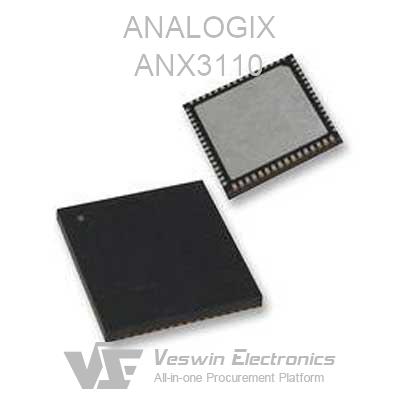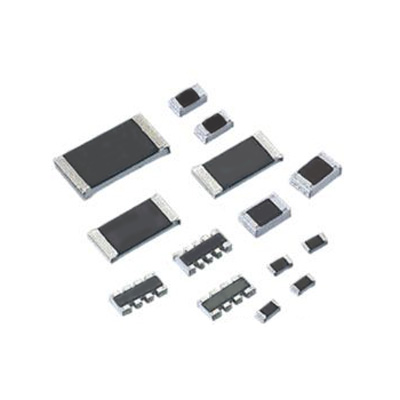Germanium transistors are transistors based on the element germanium, usually using a silicon-silicon-germanium alloy to increase the transmission speed of electrical signals. Germanium transistors, a variant of the standard transistor based on the element silicon, were an early form of transistor technology and were widely used in the early days of semiconductor technology.
There are three basic types of transistors: NPN, PNP, and MOS. Germanium transistors are usually of the NPN or PNP type, which consist of three different types of semiconductor materials (N-type, P-type and N-type or P-type, N-type and P-type).
In germanium transistors, germanium is used to make the material of the base layer, while N-type or P-type semiconductor materials are used to form the emitter and collector layers respectively. By controlling the current of the base layer, the germanium transistor can adjust the current flow between the collector and the emitter, so as to amplify the signal or control the switching of the circuit.
In 1945, Bell Laboratories began research on several new materials, including silicon and germanium, to explore their potential applications. William Shockley (William Shockley) served as group leader, members included John Bardeen (John Bardeen) and Walter Brattain (Walter Brattain).
After many failures, they finally realized the first semiconductor transistor, a point-contact transistor based on germanium semiconductors. They also won the Nobel Prize in Physics.
Bardeen (left), Brattain (right) and Shockley received the 1956 Nobel Prize in Physics
In 1947, Bell Laboratories developed the world's first point-contact triode, using germanium material, which laid the foundation for the microelectronics industry. Until the late 1950s and early 1960s, germanium was the main material for bipolar transistors. This is the first transistor in the world!
The first germanium transistor in the world
Furthermore, the world's first and first commercial bipolar junction transistors were made of germanium. Motorola was also a manufacturer of car radios. Motorola was the first company to use transistors to make radios.
Motorola Chrome Nose Car Radio
But soon after, there were numerous complaints from customers that Motorola's car radio stopped working after an afternoon of exposure to the afternoon sun. So, Motorola began to replace germanium with silicon to make transistors. Why must it be replaced by silicon?
Germanium semiconductors are limited by their own defects. When heated, germanium turns into an intrinsic state, causing the n-type and p-type semiconductors to lose their properties, so that the bipolar junction transistor cannot continue to work. Germanium CPUs cannot run above 75°C. Silicon gradually replaced germanium due to the following factors:
The content of germanium in the earth's crust is very small, about 1.8ppm (parts per million), while the content of silicon is 277,100ppm, resulting in high manufacturing costs.
The oxide of germanium is unstable, and it is prone to analytical reaction above 400 °C, resulting in difficult device fabrication, poor stability and large gate leakage current, making it difficult for the GeOx/Ge structure to become an ideal gate dielectric and isolation layer for germanium-based MOSFET devices.
The forbidden band width of germanium is only 0.66eV, which is smaller than 1.12eV of silicon, which makes the device easy to be broken down and the static power consumption increases.
The germanium substrate prepared at the current level cannot achieve the purity and low interface state density of silicon.
However, germanium still plays a role in some specific fields, such as diodes, transistors, optoelectronic devices, sensors, etc., and is widely used in color TVs, computers, telephones and high-frequency equipment. In the fields of solar cells and space power sources, germanium triple-junction solar cells have shown good performance.
In the future, as the process size continues to shrink, silicon materials may reach their physical limits. At this time, germanium or III-V compound semiconductors may become a good choice as channel materials. So, while silicon is gradually replacing germanium, germanium may play an important role again in the future.
What is the advantage of germanium transistor
The hole mobility is the largest, four times that of silicon; the electron mobility is twice that of silicon.
The band gap is relatively small, which is conducive to the development of low-voltage devices.
The activation temperature of the donor/acceptor is much lower than that of silicon, which is beneficial to save the thermal budget.
The small Bohr exciton radius helps to improve its field emission characteristics.
The small forbidden band width helps to combine dielectric materials and reduce leakage current.
Low noise
Compared to silicon, germanium is relatively stable at high temperatures
Optical application
Germanium has a high thermal conductivity
Are germanium transistors better than silicon
Germanium transistors have higher transfer rates in high-speed circuits, but most of their characteristics are lower than standard silicon transistors, including power distribution, current gain, and operating frequency. Germanium transistors are less temperature stable and prone to leakage current that can short out and burn the circuit. Germanium is a rare and expensive metal to mine. Extracting semiconductor-grade silicon (SGS) is easier and less harmful to health than silicon. The lower cut-off voltage of germanium semiconductor components makes them suitable for electrical components and some high-frequency applications. In the future, germanium alloy transistors may play a more important role in high-speed components and radio frequency applications.
What are the disadvantages of germanium
Germanium is a relatively active material, and the interface with the dielectric material is prone to oxidation-reduction reactions, resulting in the formation of GeO and more defects, thereby affecting the performance of the material. Due to the small reserves of germanium, it is not suitable to directly use germanium as a substrate, so the development of future devices needs to rely on GeOI (germanium on insulator) technology. There are certain difficulties with this technology, but by drawing on the experience gained from studying silicon materials, we believe that these challenges will be overcome in the near future.
What does a germanium transistor do
High-frequency circuits: Because germanium transistors have high electron and hole mobility, they are used to make components such as high-frequency amplifiers, mixers, and oscillators, which are suitable for wireless communication, radar, and radio frequency equipment.
Optical applications: germanium is transparent to infrared light, so it plays an important role in optical applications. They are used in areas such as infrared detectors, infrared sensors and thermal imaging.
Solar cells: Germanium is used together with gallium arsenide in the manufacture of solar cells to provide high-efficiency photoelectric conversion capabilities.
Thermoelectric power generation: germanium, together with silicon and tellurium compounds, is used to manufacture thermoelectric power generation devices for energy supply in aerospace, satellites and space stations.
Transistors and Diodes: Germanium transistors played an important role in the early development of bipolar junction transistors.
Sensors: Germanium transistors can be used as sensors for photoelectric, Hall and piezoresistive effects.
Hot News









